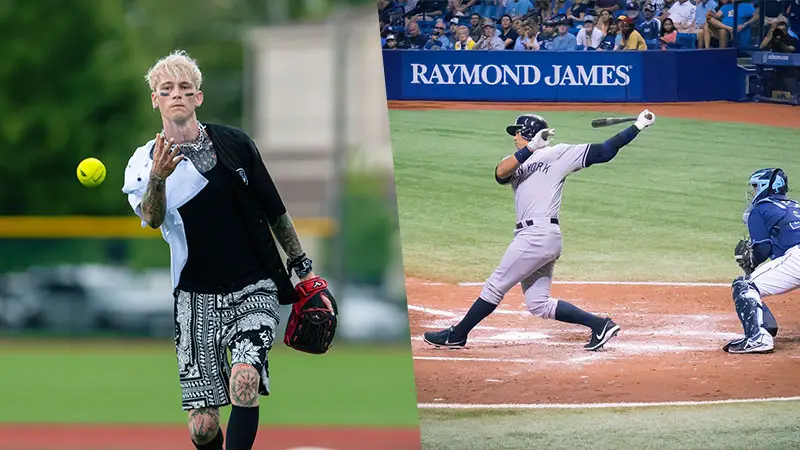As a sports enthusiast, I’ve often found myself explaining the intricate differences between baseball and softball. Despite their striking similarities, each game has its unique set of rules, strategies, and field dimensions that set them apart.
From the pitching delivery to the baseline measurements, everything contributes to the distinctive charm of these two sports.
In baseball, players have to slug the ball almost twice the distance than in softball to hit a home run. Yet, softball is not just baseball with a bigger ball. The pitching rules, the size of the field, and even the number of outfielders differ significantly.
Let’s dive deeper into the world of baseball and softball, exploring the nuances that make each game a spectacle in its own right.
Key Differences Between Softball and Baseball
Expanding on the unique qualities of each sport, let’s delve deeper into the key disparities between softball and baseball, analyzing field dimensions, equipment, and player positioning.
Field Dimensions and Base Path
One primary distinction lies in the field dimensions and base path lengths. Baseball’s base paths measure 90 feet, while softball’s sit at a modest 60 feet.
Baseball fields also boast expansive dimensions with a regulation outfield fence distance of 330ft down the foul lines and 400ft to center field. It’s evident that baseball fielders must cover more ground compared to their softball counterparts.
In contrast, softball fields consist of smaller dimensions recommended field dimensions are a minimum of 190ft down the lines and 235ft to center field.
Additionally, unlike baseball fields, a softball field doesn’t feature infield grass, a characteristic known as a ‘skinned diamond’.
Equipment: Balls and Bats
Equipment-wise, both sports employ different bats specifically designed to cater to the needs of the respective game, and safety standards.
Baseball bats possess a larger and thicker barrel, facilitating more solid contact with the smaller, denser ball.
They feature a slightly thicker and longer handle for a better grip and more balanced swing. On the other hand, softball bats are designed lighter in contrast to the heavier baseball bats.
As for the balls, they differ too. Baseballs are denser and smaller with a circumference always measuring 9 inches.
Number of Players and Positioning
The number of players and their positioning is another pivotal difference. Typically, baseball and fastpitch softball deploy nine players on the field.
However, slow pitch softball diverges, having ten players on the field at all times an extra player in the outfield. Thus, the need for additional strategy and collaboration in slow pitch softball extends beyond what’s required in baseball or fastpitch softball.
This increased number of players significantly alters gameplay, with strategies evolving to involve an extra fielder. Furthermore, in slow pitch softball, walk rules differ from baseball.
Pitchers must maintain a certain arc in their throw, adding another unique dimension to the game’s tactics.
Gameplay Rules and Style
In this section, we’ll delve into the complexities of baseball and softball gameplay, focusing on specific elements such as pitching style, inning length, and base running rules.
Pitching: Overhand vs Underhand
A salient difference between baseball and softball lies in the pitching delivery. In baseball, the pitching technique generally used is the overhand delivery, providing an opportunity to throw high-speed pitches.
On the other hand, softball employs an underhand pitching method there are no speed or arc restrictions, enhancing control over the pitch.
However, the pitch must travel within certain height restrictions, typically between 6 and 12 feet (1.8 and 3.7m) above the ground. The umpire holds the right to declare a pitch illegal while it’s airborne.
Inning Length: Baseball vs Softball
When contrasting the duration of baseball and softball games, note the difference in the number of innings. With baseball games, you’ll find they feature nine innings, in accordance with regulation play.
Softball games, though, are slightly shorter, containing only seven innings in regulation play. This distinction contributes to the overall duration of each sport’s matches and subtly influences the strategies applied by teams during gameplay.
Base Running Constraints
Another distinct feature is that base running rules vary between the two sports. Base runners in softball must adhere to a key constraint: they can’t take a lead before the pitch is put into play.
Infringing this rule could lead to the runner being declared out. In contrast, baseball players enjoy the freedom to take leads, contributing to the dynamic nature of baseball strategy.
On the flip side, softball’s ‘no lead’ rule amplifies the importance of the pitcher’s skill and speedy reactions of base runners. It ensures a more controlled and measurable play.
Meanwhile, the freedom in baseball adds an unpredictable element, emphasizing strategic base running and defense coordination – a key part of the game’s allure.
Protective Gear and Safety Measures
In line with the distinct characteristics of baseball and softball, the equipment used for player safety notably varies. This section aims to explore the key distinctions in protective gear used in both sports.
Use of Face Masks in Fielding
In softball, fielding masks prove critical for player safety, prominently worn by pitchers and infielders. Positioned closer to the batter, these players face heightened risk from the ball play. The masks offer paramount protection, keeping injuries at bay.
In stark contrast, it’s rare to spot a baseball player with a face mask, excluding the catcher. Owing to a greater mound-to-home plate distance, baseball players encounter less immediate threats.
Protective gear concerns are usually limited to first and third base coaches who, based on regulations, don helmets during gameplay.
Differences in Protective Equipment
Apart from fielding masks, other protective gear varies between the two sports. Baseball gloves typically offer a shallower pocket, facilitating nimbler ball transfers aligning with the sport’s need for swift game plays.
On the other hand, softball gloves are designed slightly larger with a deeper pocket, to effectively accommodate the size of the softball.
Additionally, the recent surge in batting velocities has spurred increased use of protective batting gear like elbow guards, shin guards, hand guards, and sliding mitts in both sports.
Companies like Evoshield contribute to player safety, innovating advanced equipment tailored for each sport’s unique requirements.
Most notably, softball gloves often come equipped with a pull-strap or Velcro wrist for swift adjustments –a feature generally absent in baseball gloves.
Nevertheless, despite these subtle disparities, the overall design and functionality of the gloves remain largely similar across both sports.
FAQs
Are there differences in the equipment used in softball and baseball?
Yes, there are significant differences. Softball uses a larger ball (11-12 inches in circumference) compared to baseball (9-9.25 inches).
Do softball and baseball have different pitching rules?
Yes, they do. Softball pitchers deliver the ball underhand from a circle 43 feet away from home plate, while baseball pitchers throw overhand from a mound 60 feet, 6 inches away.
How do the scoring and gameplay differ between softball and baseball?
In softball, the games are often faster-paced due to the smaller field and underhand pitching style. Scoring tends to be higher, with more emphasis on speed and strategic base running.
Are there differences in the rules governing base running between softball and baseball?
Yes, although the fundamentals are similar (advancing bases, tagging up), there are differences in detail.
Conclusion
So, we’ve journeyed through the unique worlds of baseball and softball, dissecting their rules, strategies, and equipment.
We’ve seen how the smaller field size, lighter bats, and player positioning in softball shape its fast-paced gameplay. We’ve explored how baseball’s overhand pitching, longer innings, and base running rules add a different flavor to the sport.
It’s clear that despite their similarities, these two sports have distinct dynamics that make each a thrilling game in its own right.
The safety measures and protective gear, including the use of face masks in softball, show the sport’s commitment to player safety.
The ongoing advancements in protective batting gear in both sports underscore the importance of player safety. Ultimately, whether you’re a fan of baseball or softball, it’s the love of the game that unites us all.








Pat Bloom